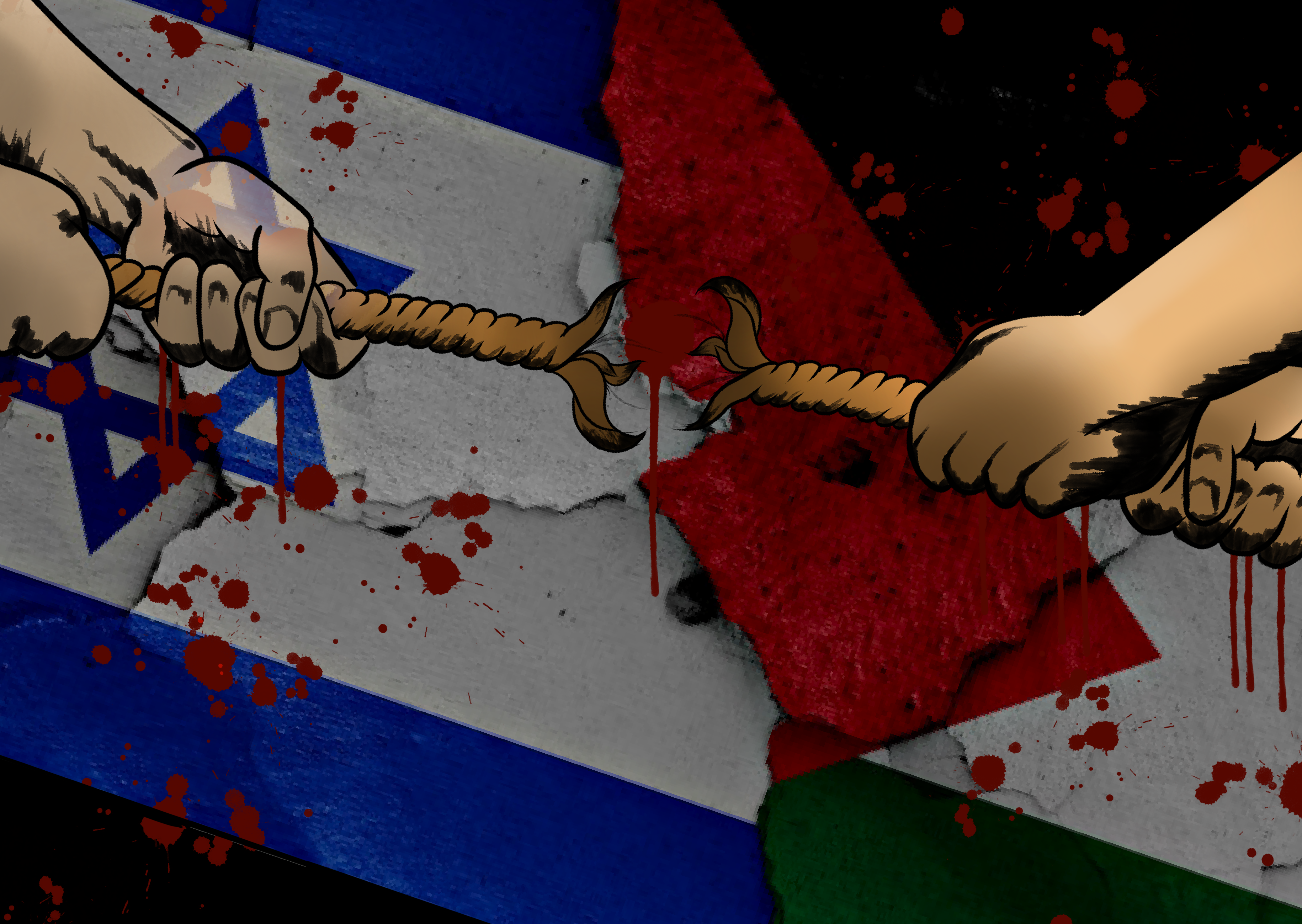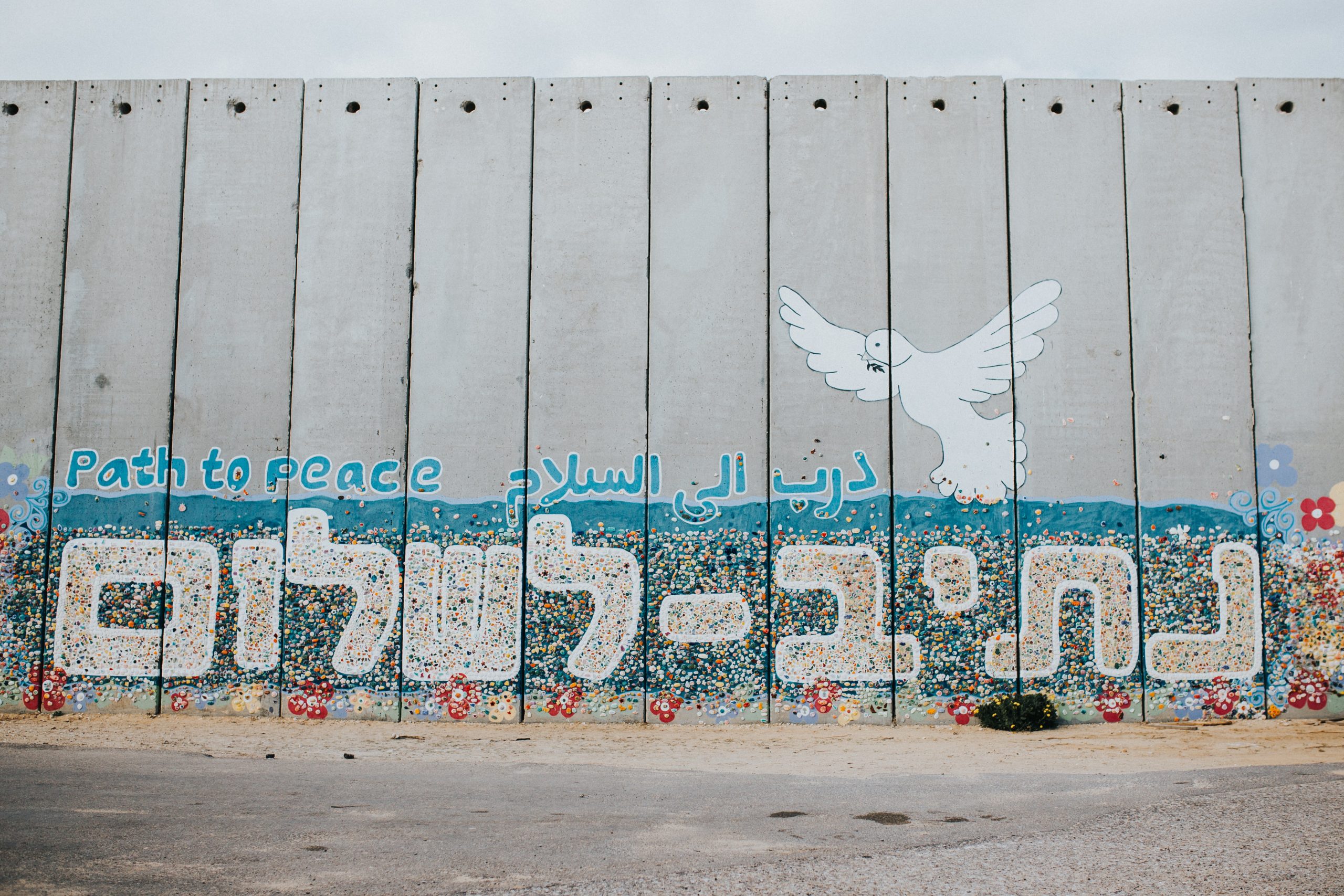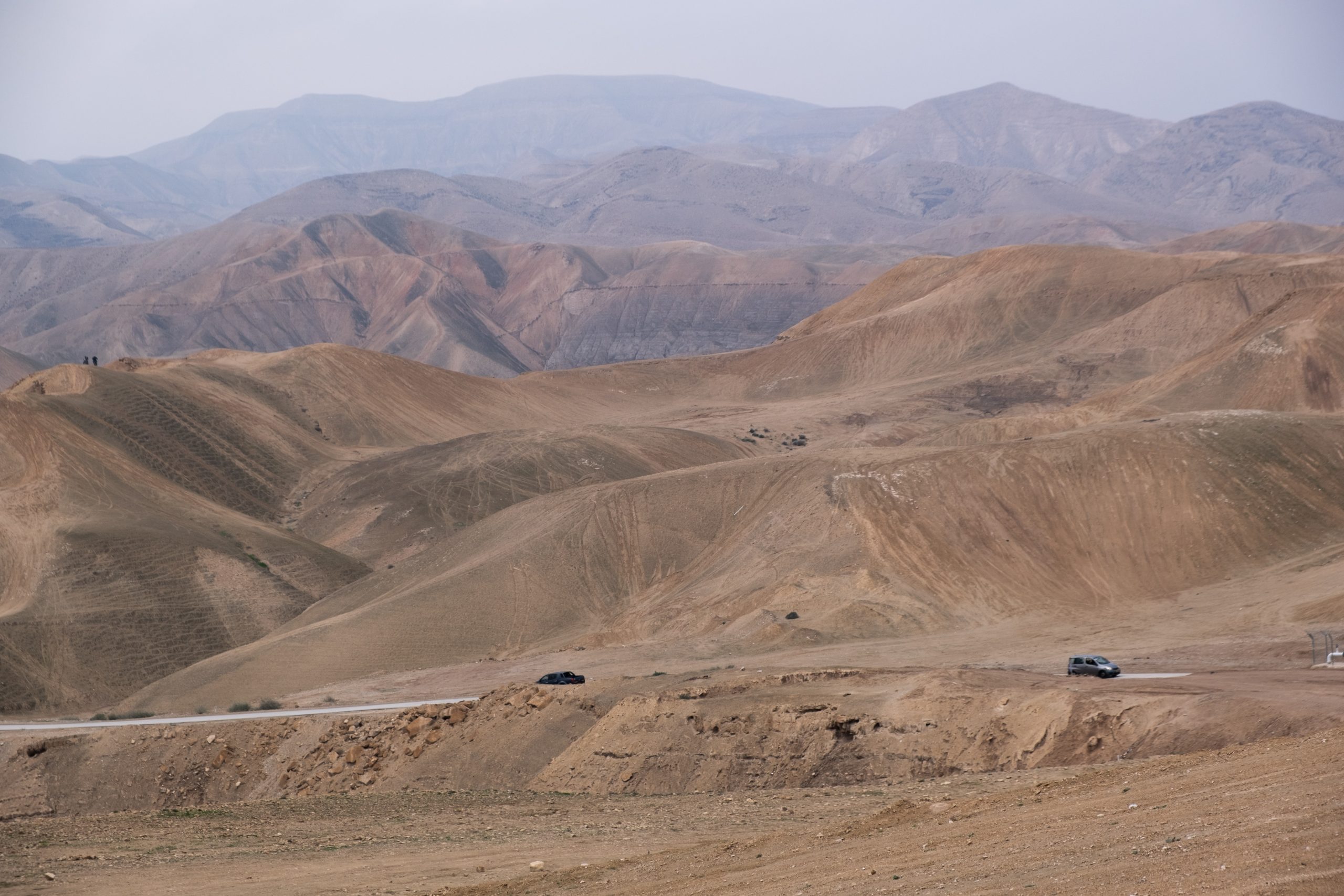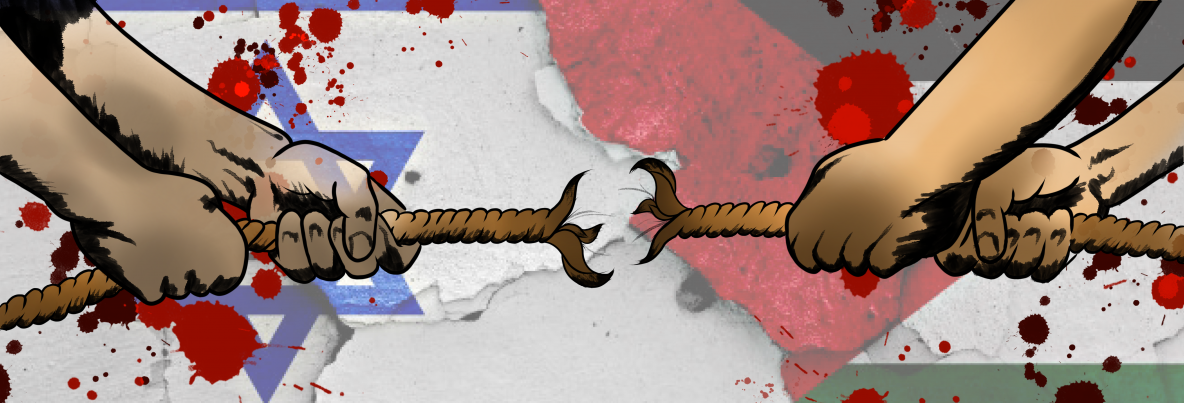AN INSIGHT INTO THE ISRAEL AND PALESTINE CONFLICT
By Isobel McCarthy / 23 September 2020

Illustration by Melanie Petrovic
The Israel/Palestine conflict is a recurring headline in our media outlets which has become synonymous with turmoil, instability and deep-rooted divisions. Its prevalence in global news has caused it to be regarded as the world’s “most intractable conflict”, as its longevity and complexity is so elaborate.
In summary, the conflict is an interminable, religious and ethnic feud that embodies and exacerbates the struggles and tension within the Middle East. The conflict continues to pervade the Western system just as much as the MENA region. Yet, for many of us, its history is complicated by a plethora of contrasting views. In order for the conflict to be consumable for the average reader, it must be presented both completely and neutrally.
Put simply, the conflict emerged in the late 19th and early 20th century due to the formation of nationalist movements amongst both the Jews and the Arabs. Each side attempted to gain sovereignty and rights for their people, whilst simultaneously not mutually recognising the other. This in turn has detrimentally affected security issues and human rights – as evidenced by the lack of freedom of movement for Palestinians, and the control of Jerusalem and Israeli settlements. Ultimately, this caused a build-up of animosity which has developed into the ongoing Arab-Israeli conflict that we know today.
The crux of the conflict emerged in the mid 20th century, during both Amin al-Husseini’s reign as a Palestinian Arab nationalist and the end of World War II. Al-Husseini claimed that the Jewish nationalist movement and Jewish immigration to Palestine was the enemy, which gradually became embedded in Arabs identity. This belief coincided with the creation of the state of Israel in 1948, its purpose being to establish a permanent homeland for the Jewish people, providing settlement and security. This meant Jews became divided from the Palestinian community, exacerbating the cleavages that existed between either side.

Via Unsplash
The 1948-Arab Israeli War
By this point, these divisions were shaping the political climate of the Middle East and were perpetuated by the Arab League, a regional organisation created in March 1945 and made up of six members: Egypt, Iraq, Transjordan, Lebanon, Saudi Arabia and Syria. The League agreed to intervene on behalf of the Palestinian Arabs by marching their armies into former British Palestine. The intervention erupted into the 1948-Arab Israeli War, causing 15,000 casualties and several armistice agreements of 1949, such as Israel’s hold of the former Mandate territory, Jordan’s occupation of the the West Bank and Egypt’s control over the Gaza Strip. Whilst the armistice agreements seemed complete, each was destined to fail, as both sides were unsatisfied and wanted more.
The Suez Crisis (1956) and The Six Day War (1967)
The effects of the 1948-Arab Israeli War are still felt today by victims and are exacerbated by other continuous internal and external battles such as the Suez Crisis (1956) and the Six Day War of 1967. The latter was particularly effective in enhancing Palestinian nationalism as Israel gained military control of the West Bank from Jordan and also took hold of the Gaza strip from Egypt. This victory made Israel three times its pre-war size and paved the way for the construction of settlements in the newly occupied territories. By this point, the Palestinian Liberation Organisation (PLO) was at the forefront of liberating the Palestinians, and was intent on violence aimed at Israelis.
Settlers in the West Bank
An issue that has served only to exemplify the underlying tensions between Palestine and Israel is the prevalence of Jewish settlers in the West Bank. The West Bank is a chunk of land east of Israel, that is home to nearly three million Palestinians. Israel took control of it during the Six Day War in 1967. For many Jews, the West Bank was the heartland of the ancient Jewish state whereas Palestinians consider it to belong to them.
Ever since Israel’s control of the Bank, 500,000 Jews have migrated in groups to settle on or near the West Bank border with Israel. The settlements divide the Palestinians and weaken their status to land, while Jewish communities gain strength. For many, the settlers are violating the conditions of the Fourth Geneva Convention, although the Israeli governments dispute this.
The United Nations has argued that the construction of settlements is obstructing peace in the Middle East, notably under the current Israeli Prime Minister Benjamin Netanyahu. In 2019, Netanyahu commissioned a further 3,500 homes being built in East Jerusalem which has ultimately served to prevent peace. The only solution seems to be a re-defining of the border which will be a lengthy and tumultuous process.

The Gaza Strip
Similar issues of sovereignty and land power are evident within the Gaza strip, a populated strip of land that has become a manmade humanitarian disaster. Israel’s military presence in the Strip was lost when it withdrew unilaterally in 2005. Despite this, it continues to control crucial aspects such as border crossings and sea and air space.
Simultaneously, the Strip is ‘governed’ by Hamas, a militant “resistance” movement against Israel. Hamas’s takeover of the Strip triggered an Israeli blockade of the flow of commercial goods which has been detrimental to citizens access to health care, food and water. Furthermore, Hamas have fired thousands of rockets towards Israeli targets. The outcome of this has been numerous air campaigns, ground invasions and bombing campaigns.
The Oslo Accords 1993 and Camp David 2000
Time and time again, the two sides have battled against each other for areas of land and sovereignty. But there have also been significant attempts at peace.
In 1933, Rabin led Israeli officials into discussion with the PLO, headed by Arafat. This became known as The Oslo Accords of 1993. The discussions were excruciatingly slow, but progress was made. Israel agreed to gradually cede control of the Palestinian territories in exchange for peace. The agreements stalled after the assassination of Rabin which subsequently lead to no conclusive agreement between Arafat and the new Israeli Prime Minister, Barak.
In 2000, there was a second chance at peace, mediated by Bill Clinton in the form of the Camp David Summit, 2000. Barak proposed a plan for a non-militarized Palestinian state. Also, the 69 Jewish settlements (which comprise 85% of the West Bank's Jewish settlers) would be ceded to Israel. The proposal was rejected by Arafat, and he failed to offer a counter-deal, eventually causing the Summit to have no tenable solution. Mr. Malley, a special assistant to President Clinton for Arab-Israeli affairs believed that each side came to the camp with completely different perspectives, which meant there were hugely divergent approaches. Clinton has since blamed Arafat for the breakdown of the summit due to his refusal to propose a counter-offer.

Via Unsplash
Current Situation of the Conflict
Peace is still being attempted, despite persistent levels of violence. Netanyahu, the Prime Minister of Israel and the PLO, headed by Abbas are stuck in negotiations, with the Quartet on the Middle East, composed of the US, Russia, The European Union and the United Nations.
Currently, there are two crucial ways in which the conflict can be resolved. The first and most popular approach is through a two-state solution. By having independent and separate states, each can run their own country that fits accordingly to religion, culture and history. Polling suggests that this would be the most applicable approach.
The second approach is to have a one state solution. This would merge Israel, the West Bank and the Gaza strip into one country. If this were to take place, the Arab Muslims would outnumber the Jews and subsequently reduce Israel’s Jewish state. Whilst this does not seem an appropriate outcome, it is becoming inevitable as either side continue to fight and fail to reach agreements.
Despite years of conflict and instability, there is still hope that a solution will be met, whatever that may be. It is important that, as citizens, we educate ourselves on the matter at hand.
Art by
Words by
Share this article

